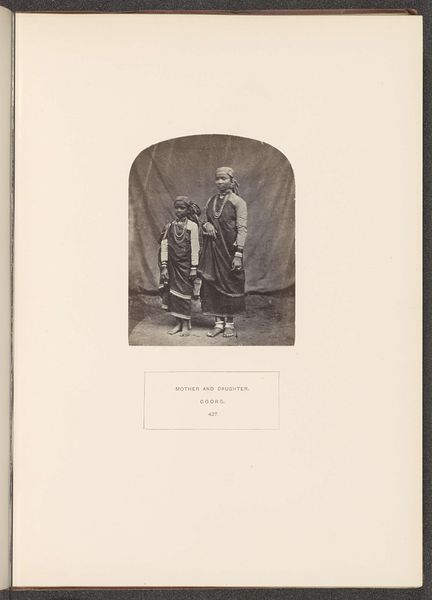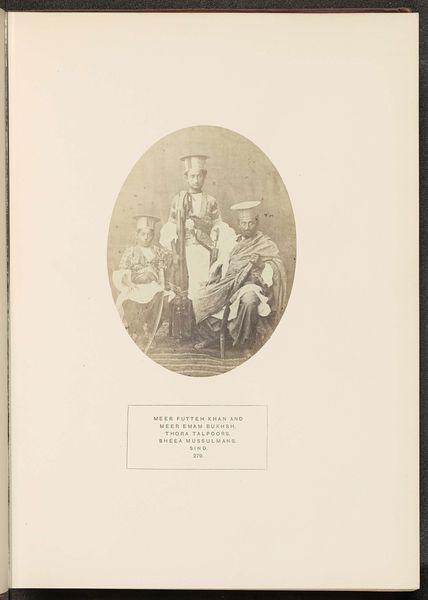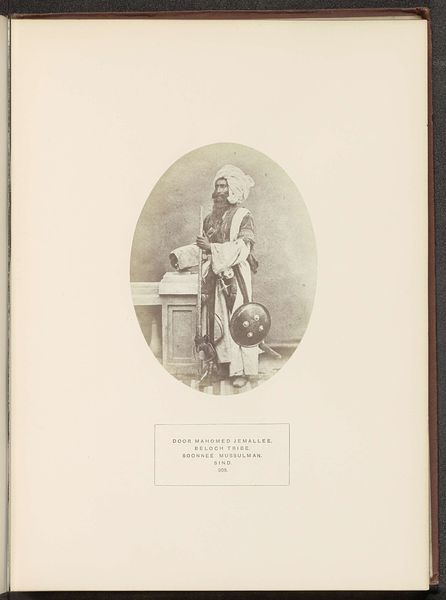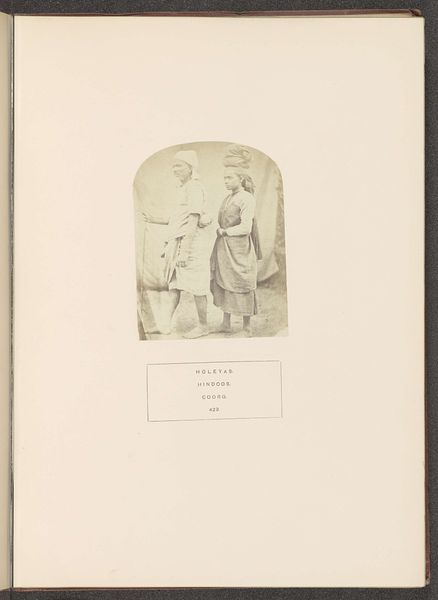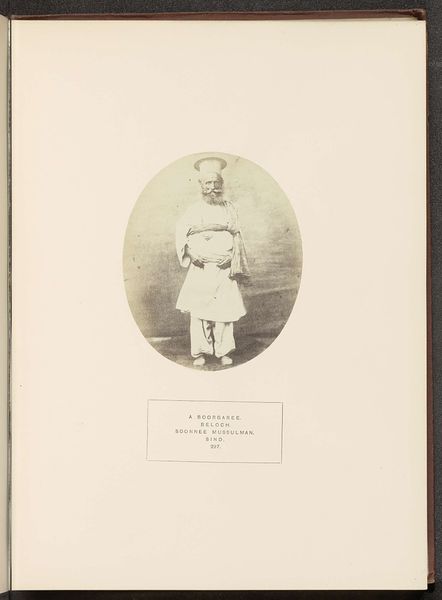
albumen-print, photography, albumen-print
#
albumen-print
#
portrait
#
asian-art
#
photography
#
albumen-print
Dimensions: height 107 mm, width 87 mm
Copyright: Rijks Museum: Open Domain
Curator: Well, looking at this faded albumen print, what’s your initial feeling? I see it as both intensely personal and profoundly political. Editor: There’s a quiet authority about him. A man caught in time, observing, but unreadable. I can’t help feeling an intense sense of… well, separation. Curator: Precisely! This is a collotype print made before 1872, bearing the title "Portret van Mir Ahmed Khan." It was produced by Henry Charles Baskerville Tanner. What interests me is how this portrait functions as more than just an image of a man, but also of a political structure and a specific history of power. Editor: And, given the albumen process, doesn’t the choice of technique reflect colonial-era scientific inquiry? Curator: Absolutely. The sharp focus on his person versus the blurred edges is intriguing. It draws our eye to him. But think about how this image was likely consumed in the West. What narrative does this style of orientalist portrait reinforce? It certainly highlights an attempt to codify power. Editor: It feels incredibly studied. Every fold in his robes, every piece of adornment painstakingly recorded. Do you think this level of detail gives insight or reinforces the distance between the subject and the viewer? Curator: The devil’s in the detail, isn’t it? It makes me wonder if there are intentions on the subject’s end as well? Is he intentionally presenting a display for Western viewers to control his representation? How might this photo be a form of resistance? Editor: I can’t get past the almost ghostly, sepia tone. Everything has a story of the past, like half-remembered things fading away over time... and I'm suddenly aware of the stories we aren’t hearing here. What do you think, as a last thought, will linger with visitors of this particular photo? Curator: That this seemingly simple photograph, an almost casual encounter, is deeply layered. It encourages visitors to explore both our engagement with the work, and the many narratives the subject’s face, however elusive, has yet to tell us.
Comments
No comments
Be the first to comment and join the conversation on the ultimate creative platform.

